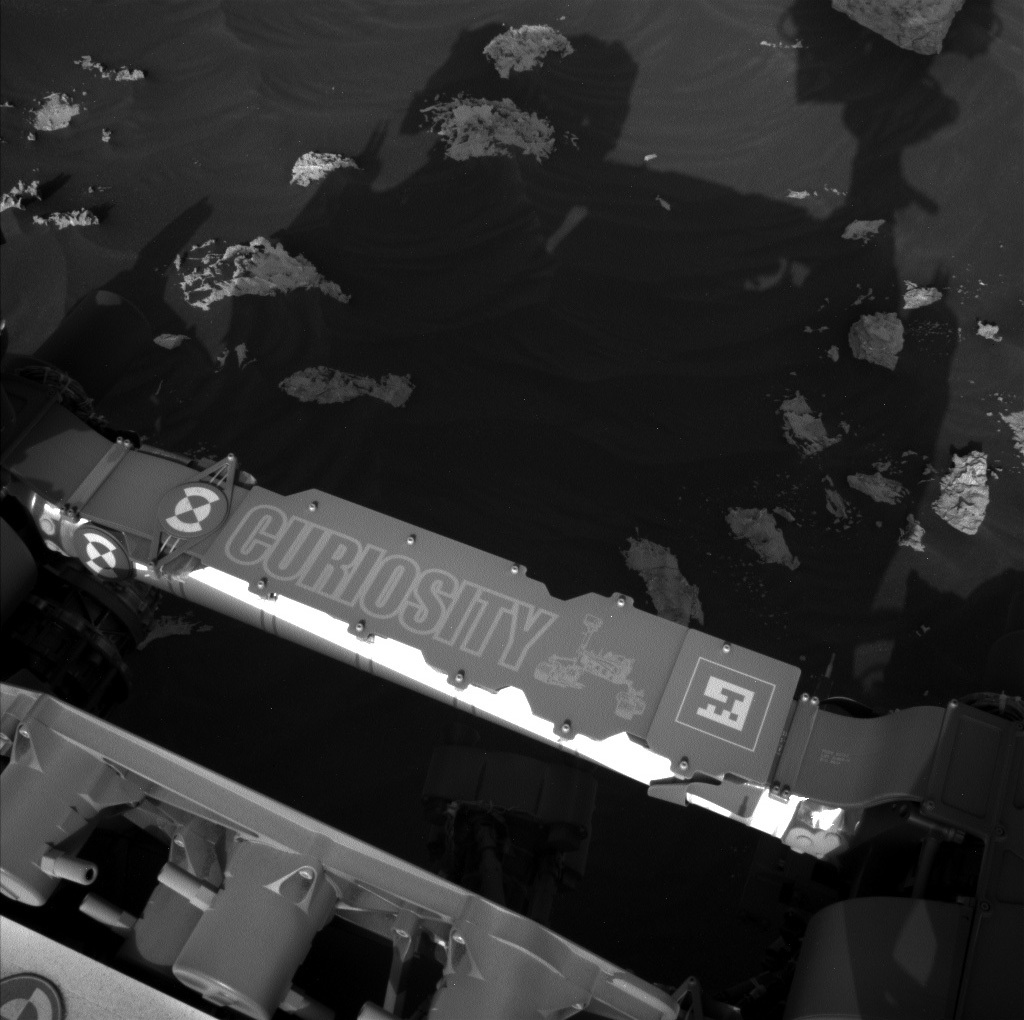2 min read

The Sol 3044 drive brought MSL to an area mostly covered by dark sand, with very few exposed rocks in the arm workspace. So one of the first things I did this morning as MAHLI/MARDI uplink lead was to search for good locations for contact science. Unfortunately, none of the rocks that the arm can reach are large enough to be brushed by the DRT, but they don't look too dust-covered so we decided to plan MAHLI images and APXS integrations on two of them, "Pazayac" and "Sadillac" (visible below and right of center in the image above). But first, Navcam will search for clouds and dust devils, ChemCam will acquire RMI mosaics of a nearby rock named "Sourzac" and distant sulfate-bearing outcrops, and Mastcam will take an image of Sourzac and stereo mosaics of nearby sedimentary textures and distant periodic ridges. After the two MAHLI full suites, APXS will be placed on Sadillac for an evening integration, then on Pazayac for an overnight integration.
On Sol 3045, the arm will be moved out of the way for ChemCam passive rasters on a rock dubbed "Saussignac," on Pazayac, and on a soil target named "Sableronne." Then Mastcam will acquire multispectral observations of Saussignac and the contact science targets before the rover drives about 90 meters toward the east-southeast. After sunset, Mastcam will perform a twilight survey of the sky and MARDI will take another twilight image. The vehicle will get some well-earned rest on the third sol, with only a few atmospheric observations by Mastcam, Navcam and REMS. Finally, early on Sol 3047, Navcam will again search for clouds and image the rover deck, and Mastcam will measure the amount of dust in the atmosphere.
Written by Ken Herkenhoff, Planetary Geologist at USGS Astrogeology Science Center







